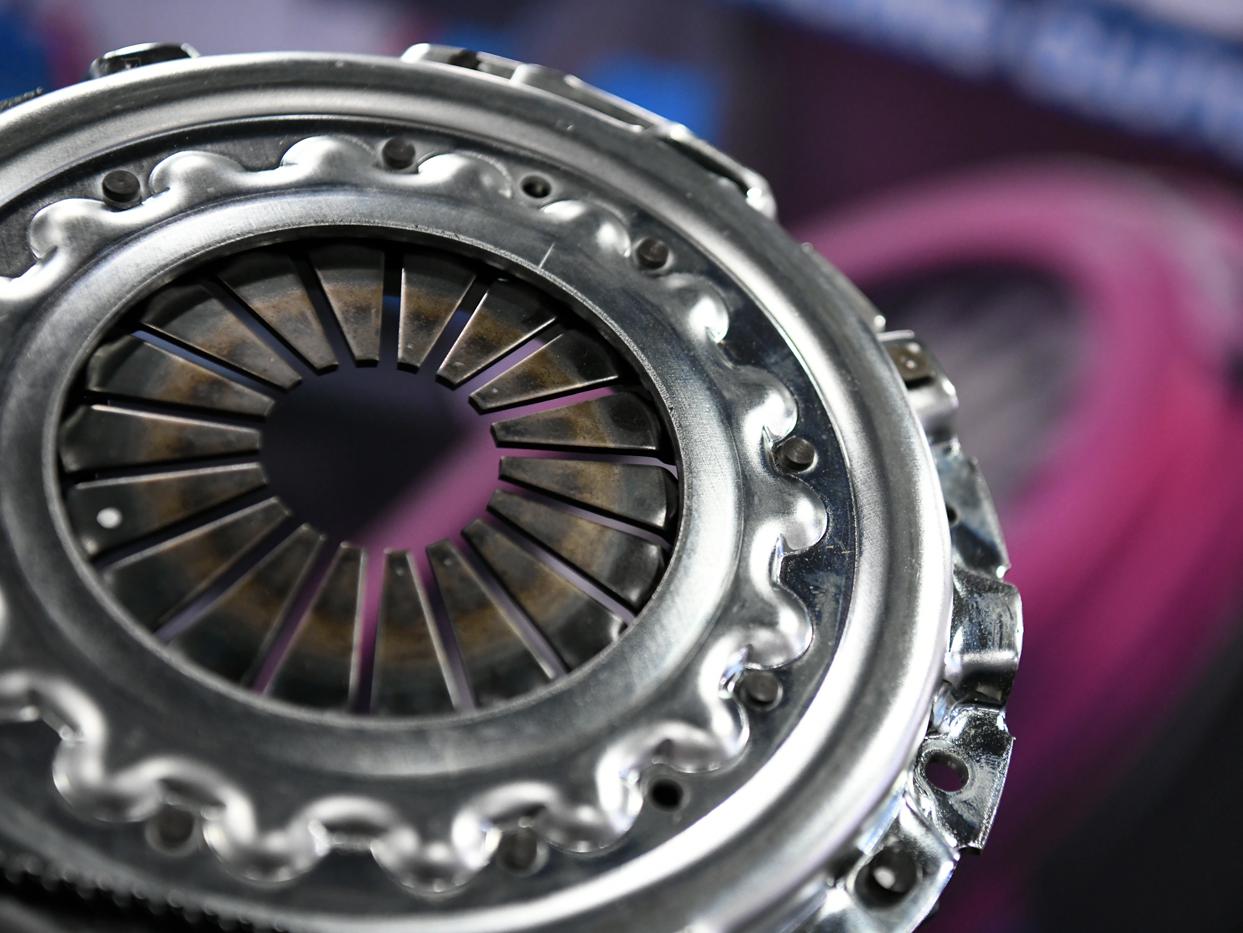Future Planning: OEMs Plotting a Path Toward EV Racing
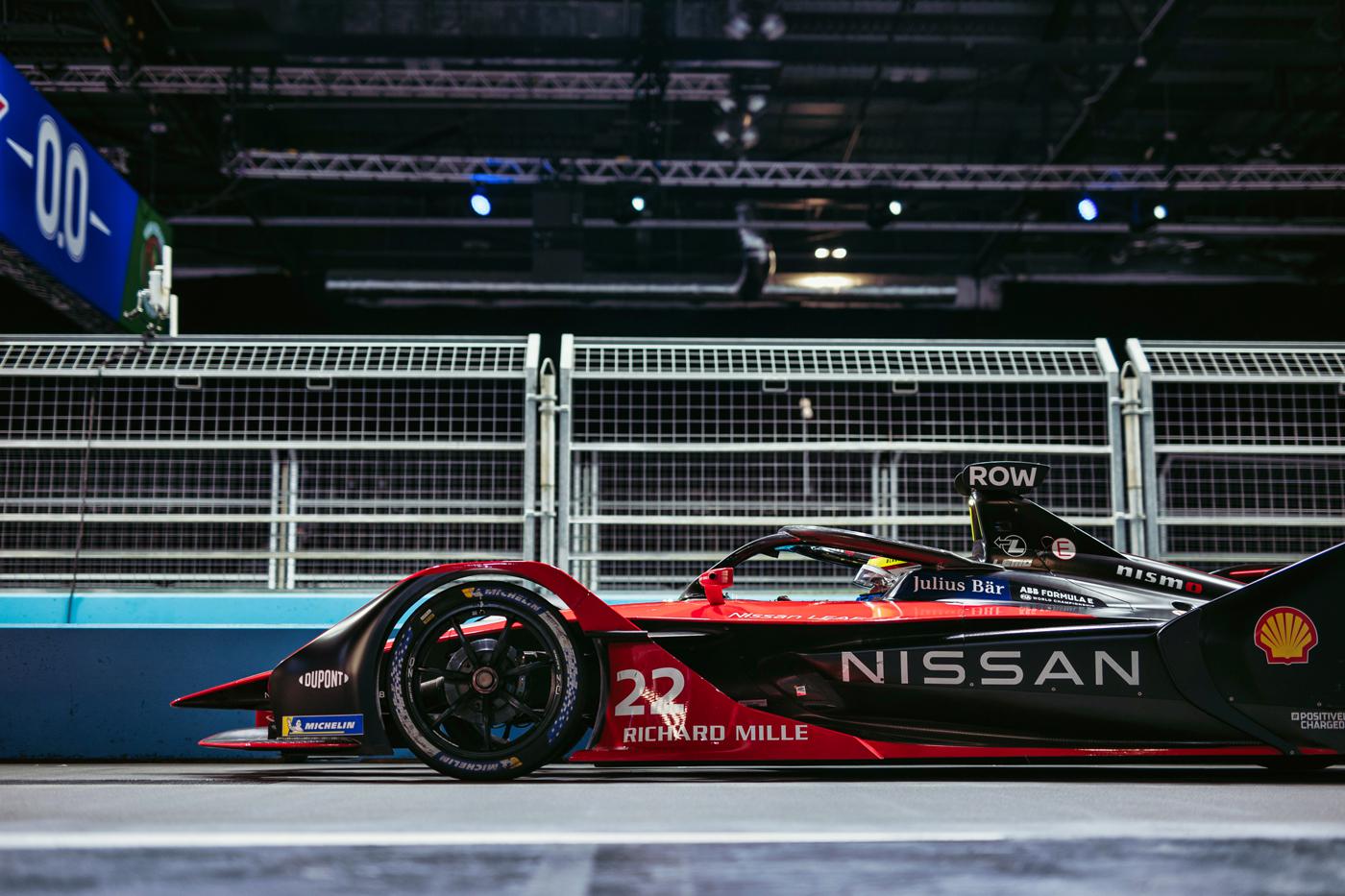
Photo courtesy of Nissan
As regulations push production car design toward electrification, automakers across the globe are now looking at EV technology as a top priority for development. But what does it mean for the future of their racing programs?
Over the past few years there’s been a pronounced shift in focus across the automotive industry. While internal-combustion-powered vehicles have served as most brands’ bread and butter for decades, looming fuel economy and emissions regulations are simply too strict to address by conventional means. That has led many companies to develop platforms that are purpose-built to support hybrid, plug-in hybrid, and pure EV powertrains.
Although motorsports has traditionally been a venue to develop cutting-edge technologies that may eventually find their way into production street cars, the nature of EVs has dictated somewhat the opposite approach at this early stage in its maturation. Current battery tech still limits the disciplines and formats where electric vehicles can be truly effective in racing, but those limitations are generally less of a concern with respect to the use-case of road-going vehicles.
Importantly, however, this shift also means that a massive amount of engineering muscle is now aimed squarely at these new platforms. As the OEMs continue down a path to increased electrification, here’s a closer look at how EV racing fits into their larger strategy, and what that means for the collective future of motorsports.
Nissan Motorsports
Franklin, Tennessee
Nissan made its all-electric racing debut in the ABB FIA Formula E championship in 2018 for the series’ fifth season, and the automaker wasted little time making its presence known on the grid. With driver Sebastien Buemi at the helm, the team took second place in the championship and secured six podiums, six pole positions, and 16 Super Pole qualifying appearances along the way.
Beyond brand awareness, the format of the series has also provided Nissan with an environment where the development of the race car correlates to the engineering behind the company’s EV production cars. “For us, it’s much more than motorsport,” said Tommaso Volpe, Nissan’s global motorsports director. “One of the main reasons we joined the series is because of this strong connection that we can make between Formula E and the core business. We came into the sport with a lot of experience in the electrification of road cars, and we transferred a lot of that experience into the development of the Formula E car.”
Formula E no longer uses a ‘spec’ powertrain, unlike many electrified series currently operating today. “The chassis and bodywork are spec components, but it’s a fully bespoke powertrain,” Volpe explained. “That’s why Formula E is the series that attracts the largest number of automakers as compared to any other motorsport. The money that we’re spending in the development of the car is relevant to the core business, while spec elements—like the aerodynamics of a single-seater, which do not apply to the core business—are not things that we need to spend on.”
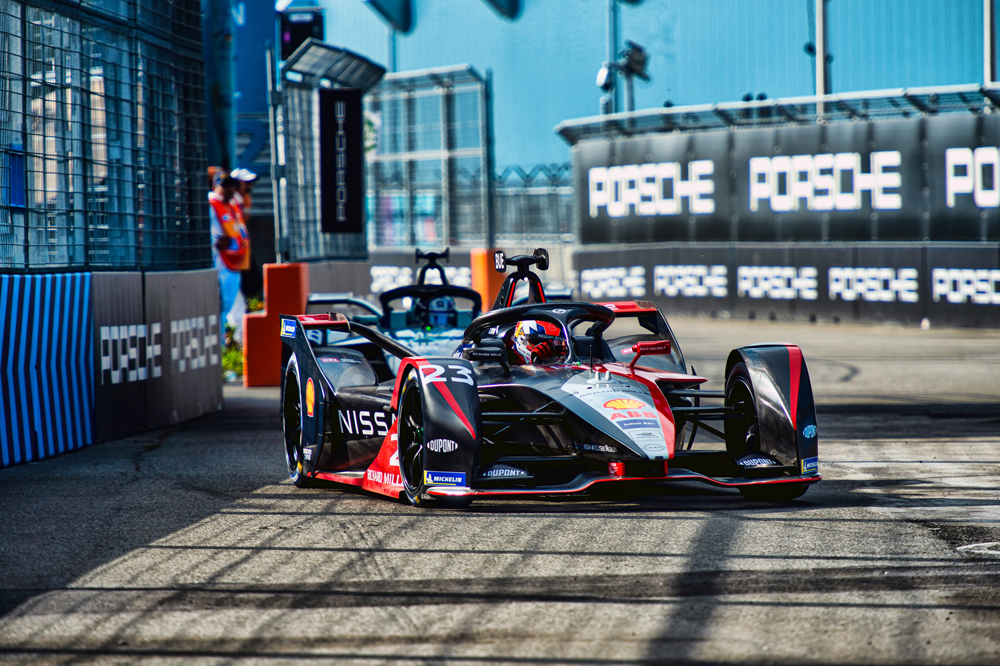
This is incredibly important for Nissan, as the automaker plans to have a fully electrified road car portfolio in its key markets by 2030. “Formula E provides us with a playground to test this technology in a high-performance context,” he said. “Along with the development of the powertrain components themselves, we’re also developing the powertrain management software, which is equally important. The two most essential areas of R&D for us in Formula E are making the hardware as efficient as possible and making the energy management as sophisticated as it can be through the software. These two areas are key to developing successful platforms for vehicles like the Ariya, our first electric SUV. Developing the energy management software is crucial because it provides more flexibility in terms of applications for an EV powertrain.”
Volpe told us that while Nissan is open to the idea of expanding into other series and motorsports disciplines with its EV technology, right now that strategy is largely being guided by series rule sets. “This is more of a function of motorsport in general,” he explained. “The strategy for Nissan—and many other automakers—is to use prototype categories like Formula E to promote the brand and develop technologies. Looking at GT categories, this is where you tend to enter with your products. Here electrification isn’t the driver, it’s the product, so you’re looking at the products in your portfolio that you can homologate and race in specific categories.”
While Volpe wouldn’t comment on the specifics of Nissan’s plans for EVs in motorsports, he said that the experience that the automaker has gained in Formula E will allow the company to hit the ground running as it starts to venture into other series with the technology. “Some of it will depend on the homologation specs given by the sanctioning bodies, but the experience we’re gaining in this series is valuable for any kind of electrification.”
Audi Sport
Neckarsulm, Germany
Electrification in Audi’s motorsports efforts dates back to 2012, when the automaker debuted a hybrid powertrain for its Le Mans program. Over the years, that system progressively evolved to play a larger role in the powertrain’s overall performance, in turn pointing the way toward the EV system that would come a few years down the road.
“Throughout the latter period of our Le Mans program, the hybrid content in terms of the total amount of power increased,” said Allan McNish, director of motorsports activities for Audi Group. “From there we moved into a complete battery electric vehicle when we stopped our Le Mans program and transitioned into Formula E. In much the same way most of our racing programs operate, it was a precursor to what we were developing on the road car side.”
McNish noted that Audi’s involvement in Formula E has not only provided a test bed for technologies that the automaker plans to put into production, it has also given the company a platform to change perceptions. “We were developing the system as well as the messaging. It allowed us to show customers what’s coming. There’s a dramatic shift happening for the customer right now, and for them to understand the benefits, they need to be able to see it in action. It’s not just about getting from Point A to Point B. It can be exhilarating as well.”
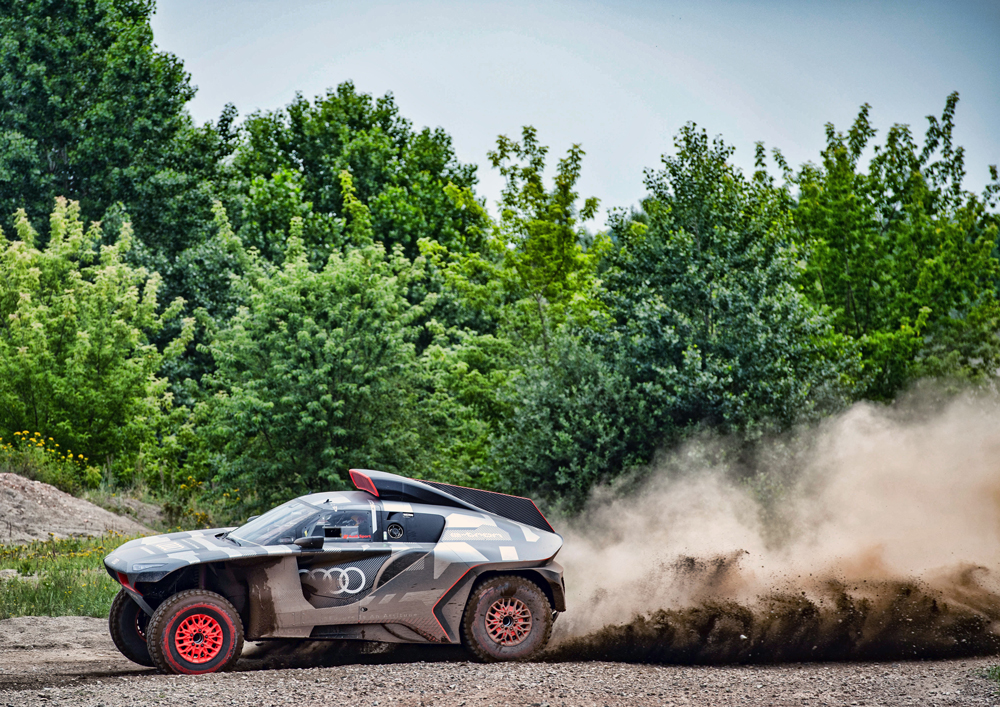
Audi has already targeted the next motorsports venue where it will take its EVs. “We’re transitioning out of Formula E and into the Dakar Rally, which is another step forward for our electric technology,” said McNish. “Dakar is one of the toughest challenges that you can take on while looking at it as an all-electric drive. There will be a lot of learning and development in the beginning. It’s definitely going to be different from what Audi has done before.”
He explained that racing environments not only provide real data at the extremes, they also allow the automaker to compare that data with more traditional testing procedures to discover where further refinements can be made. “There are effectively two core parts to an EV strategy: the hardware, and the software development to maximize the hardware. The latter is where I think you’ll see the big gains coming. Using Formula E as an example, at some race circuits we are now recuperating up to 40% of the energy used. Ten years ago, that was lost energy. A lot of this is about figuring out what these electric motors like and don’t like in terms of where we’re recuperating the energy, and how we can use that recuperation technology to also improve vehicle dynamics. We can also replicate these scenarios on dyno rigs and fully dynamic simulation systems, and we’ll run the latter on race weekends. When we’re racing in New York, our simulator is running back in Neuburg.”
McNish sees a future for EV tech in rallycross as well as GT-class road racing. But as far as Audi’s road map for EVs in motorsports is concerned, that path will ultimately be determined by the automaker’s larger goals in the years ahead. “It depends on what opportunities there are. What’s clear in our strategy is that it has to align with our priorities. Over the next few years, I think we’re going to see a much broader range of championships for battery electric vehicles.”
Toyota Racing Development
Costa Mesa, California
Although Toyota is not competing in a pure EV racing series right now, TRD President and General Manager David Wilson noted that the automaker has been focused on hybrid and EV technology for quite some time. “The development is much more advanced on the production side than it can be on the motorsport side right now. Toyota has more electrified vehicles on the road today than all other manufacturers combined. While we’re not presently competing in an EV-based venue, you’d have a tough time identifying a top-tier motorsport discipline that isn’t either presently using some form of electrification or considering a transition to some form of that. That’s where we are right now. As one of three OEMs competing in NASCAR, for instance, we have been in regular conversations with the sanctioning body about where the sport goes, directionally. I’m quite confident that there’s some form of electrification on the horizon there.”
In the meantime, Toyota’s continued involvement in LMH class racing in the FIA World Endurance Championship nurtures technological development as well. “This is a technology-driven class of racing, and there is a tangible component that feeds into the development of production car electrification with that effort.”
Wilson also pointed out that Toyota is not exclusively focusing on one type of technology as a solution for emissions concerns. “We don’t subscribe to ‘one size fits all’ thinking, and the hydrogen engine we’re using in the Corolla Sport we’re campaigning in the Super Taikyu endurance series in Japan is a good example of that. One of the big challenges is finding a path that will still captivate the fans. One of the benefits of this type of hydrogen technology is that, aside from the combustion of minute amounts of engine oil while driving, hydrogen engines emit zero CO2. Yet they still sound like traditional internal-combustion engines. So we feel that carbon-neutral motorsport solutions don’t necessarily have to be mutually exclusive from the elements that fans get excited about.”
He told us that motorsports continues to provide the company with an incredible platform to showcase these technologies, and TRD plans to take advantage of that. “Racing is a big part of sporting culture of America, and that provides us with a way to connect with a massive, passionate fanbase. With electrification, it allows us to engage with consumers and show them that it can be a technology that’s deployed not just because it’s socially responsible, but because it can deliver real performance.”
Yet he said that these motorsports initiatives must align with the realities of the current market. “Series like NASCAR and IndyCar talk about staying relevant, but it’s really about right-sizing the operational model. Teams cannot sustain the levels of money that they have been. There just isn’t enough sponsorship to support it. So IndyCar is looking at a ‘spec’ bolt-on hybrid system, and whatever we come up with in NASCAR is likely to be of a similar ilk. The teams can’t afford to get into that kind of arms race.”
With that in mind, Wilson sees EVs’ widespread integration into motorsports coming by way of hybridization first. “My pragmatic view of it is that the hybrid solutions make sense as a first step because they’re far more attainable than a pure battery EV solution. In five years’ time, I’d be shocked if every form of top-tier motorsports didn’t employ some form of hybridization. It’s almost like gravity at this point.”
General Motors
Detroit, Michigan
GM has the notable distinction of being the first automaker to introduce a purpose-built and mass-produced electric vehicle. Although the concept may have been a bit ahead of its time when the EV1 hit the streets back in 1996, it gave the automaker a head start on its competitors as the technology began to take shape.
Development of its EV racing hardware is humming along nicely today, as evidenced by projects like the eCOPO Camaro, which uses a conventional drivetrain hooked to a pure-electric powerplant that generates 800 horsepower and 800 pound-feet of torque.
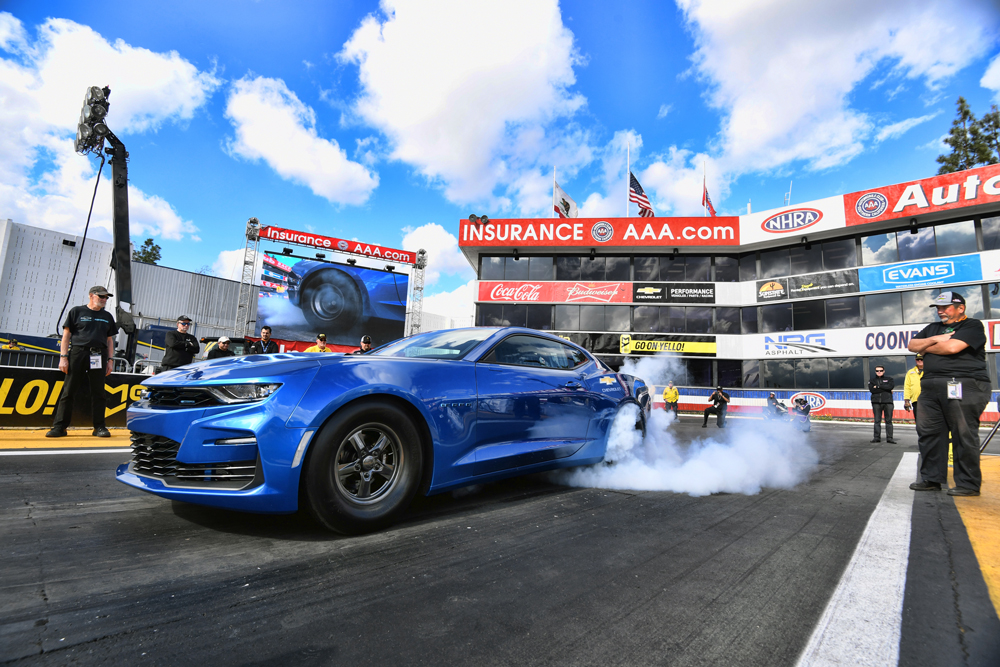
“General Motors has been known as crate specialists for internal combustion engines, so we wanted to kind of look forward and see how we could apply that same concept to powertrains of the future,” said Russell O’Blenes, director of the performance and racing propulsion team at GM. “So we designed and built that motor and battery package to be a direct replacement for the engine in the car.”
This year also marks GM’s venture into off-road motorsports with an EV. “We’re currently competing in the Extreme E series with our Hummer brand and Chip Ganassi Racing,” O’Blenes explained. “It’s a global off-road racing motorsports program, and it’s been a great initiative for learning in the space. We really focus on using motorsports as a way to try new, innovative things so that we can then bring that technology back to our production components.”
Outside of competition in series like Extreme E, GM also has dedicated locations where EV technology testing is ongoing and expanding. “We have our Performance and Racing Center in Pontiac, Michigan, which my team heads. As we’re developing the new Charlotte Technical Center in North Carolina, we’re looking at how we can tie in those testing facilities as well.”
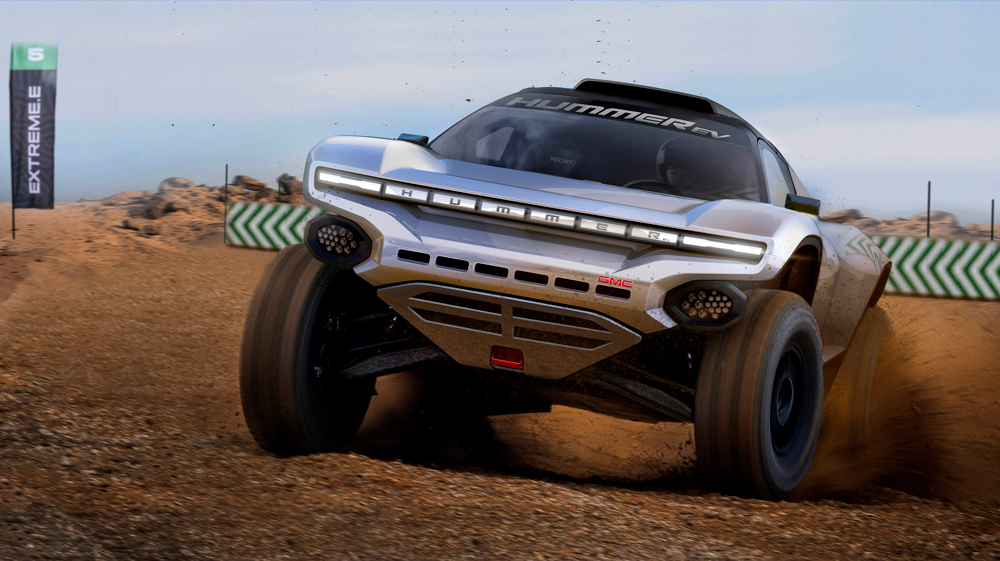
O’Blenes said that General Motors is also working closely with sanctioning bodies to determine where they see EVs fitting into their respective series. “It’s about figuring out what the future opportunities are for electrification. We started with NHRA, but Chevrolet also has a major presence in IndyCar, and for the ’24 season we’ll be using a new engine with a hybrid system. We’re working closely with them to see what kind of learnings can be had from the package. We have long partnerships with all of the sanctioning bodies, so we’re trying to work with them and our partner manufacturers to get a better understanding of what the right places are for this technology, and how we execute it to make sure it’s successful.”
Although technological hurdles still exist—and recent supply chain shortages certainly haven’t helped in that regard—it’s clear that significant progress is being made to bring EV technology to a wider motorsports audience. “In motorsports and really everywhere in the EV realm, the battery technology and the hardware are rapidly evolving,” O’Blenes added. “We’re all working toward a common goal, and you can see results in series like Extreme E and Formula E. Because so many people are all working hard to go fast, we’re making really good progress in this space.”
SOURCES
–
Audi Sport
audi.com
General Motors
gm.com
Nissan Motorsports
nismo.com
Toyota Racing Development
toyota.com/racing/trd
 MEMBERSHIP LOGIN
MEMBERSHIP LOGIN JOIN PRI
JOIN PRI


